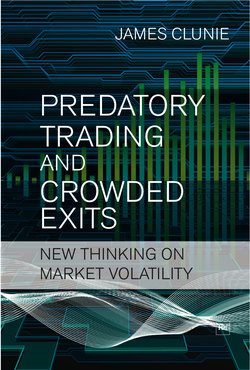Читать книгу Predatory Trading and Crowded Exits - James Clunie - Страница 12
На сайте Литреса книга снята с продажи.
The role of clients
ОглавлениеFurthermore, the model of arbitrage assumed in many popular asset pricing models is inconsistent with how arbitrage is practised in financial markets. Instead of vast numbers of small arbitrageurs, arbitrage is conducted in practice by relatively few specialised professionals, who generally use outsiders’ money to take large positions. An agency relationship thus exists between the specialised arbitrageurs and their clients. Where a prospective client seeks to place money with a hedge fund but has a limited knowledge or experience of arbitrage, he might simply allocate capital to those funds with the strongest track records. Consequently, the size of funds under management becomes related to the past performance of the arbitrageur.
This dynamic can generate some interesting outcomes for markets. As an illustration, assume the existence of noise traders, so that securities need not be always rationally priced. Idiosyncratic risk (risk that cannot be hedged) can deter arbitrageurs. Consequently, securities with idiosyncratic risk can remain mis-priced for some time. With the existence of noise traders, arbitrage positions can widen and the arbitrageur loses money. Some clients might react to these losses by seeking to redeem their fund assets. However, if we assume that any market mis-pricings will eventually be corrected, the expected returns from arbitrage positions are high exactly when past returns are low. Thus, arbitrageurs can be forced to close positions that offer high expected returns, exacerbating deviations from equilibrium.
The poor performance of many classes of hedge fund during 2008 was followed by large client redemptions, and presumably the closure of some attractive arbitrage positions. In so far as this created deviations from equilibrium, those traders with capital to deploy and an ability to spot the mis-pricings would find such a trading environment very fertile. For those risk-arbitrageurs who suffered redemptions, the need to liquidate attractive positions must have been a galling experience.
Where the price of a security moves far away from an estimate of its fundamental value, one might expect it to revert at some future point. But simply identifying a mis-priced security is not enough. It could remain over-priced for some time or the mis-pricing could even grow, resulting in losses and ultimately redemptions for the arbitrageur. The path the security price takes is important, because some market players might be unable to hold onto positions that produce losses.
Hedge funds attempt to mitigate the risk of clients redeeming in response to losses by using devices such as ‘lock-in periods’ and ‘gates’ that impose contractual restrictions on clients seeking to withdraw funds. However, potential clients might fear being locked in to a poorly performing fund and so it could be more difficult to promote and market this type of fund. Only managers with strong track records are likely to be able to persuade clients to accept lengthy lock-in periods.
Educating clients about the need to hold on to attractive positions after losses is another important, albeit time-intensive, initiative to minimise redemption risk. Arguably, the best time to do this is when returns have been strong and the client can understand the principle of holding on to attractive positions that have experienced near-term losses. If education is left to the last minute, when the losses start appearing, there is a higher risk that the client’s emotions will overwhelm the discussion.
